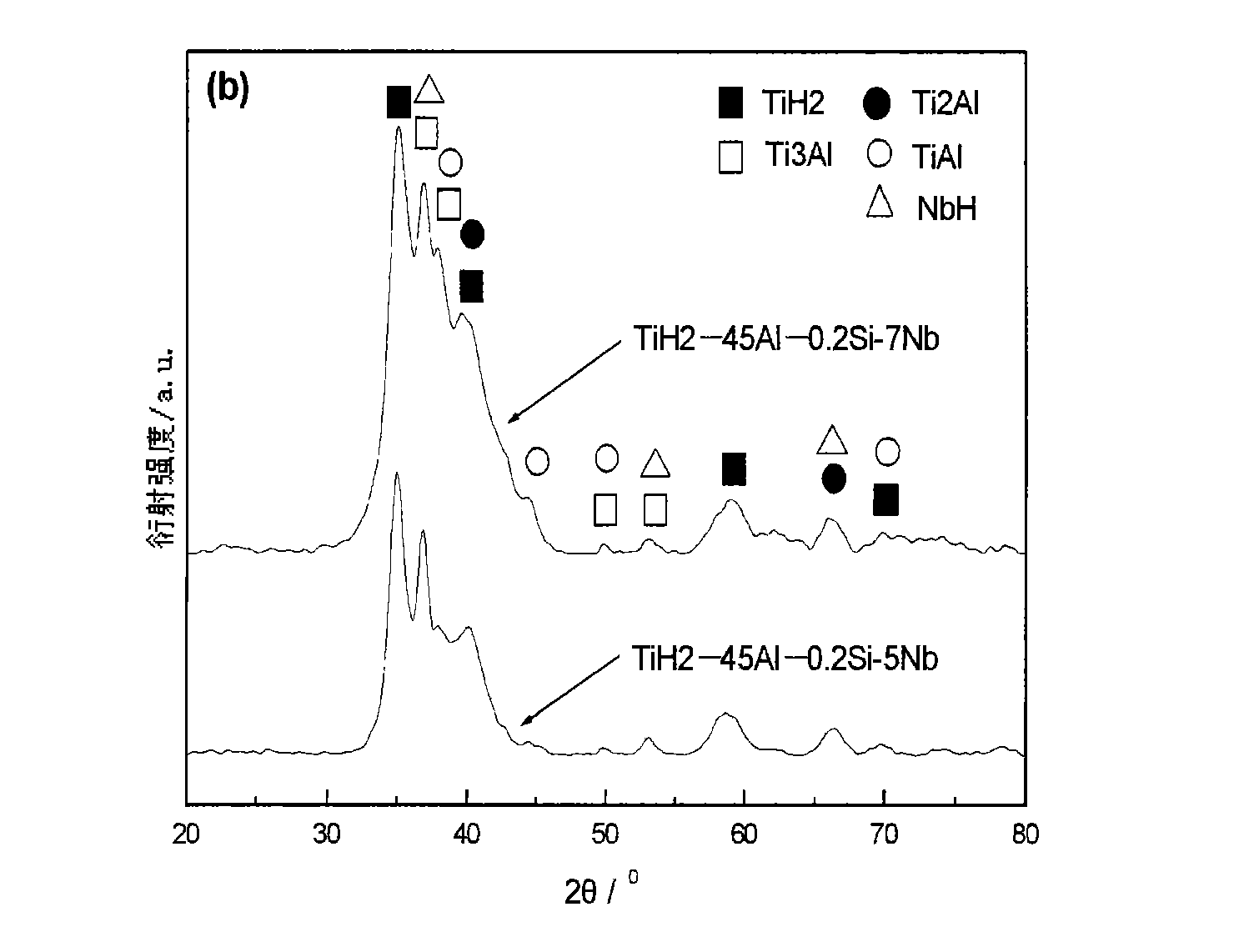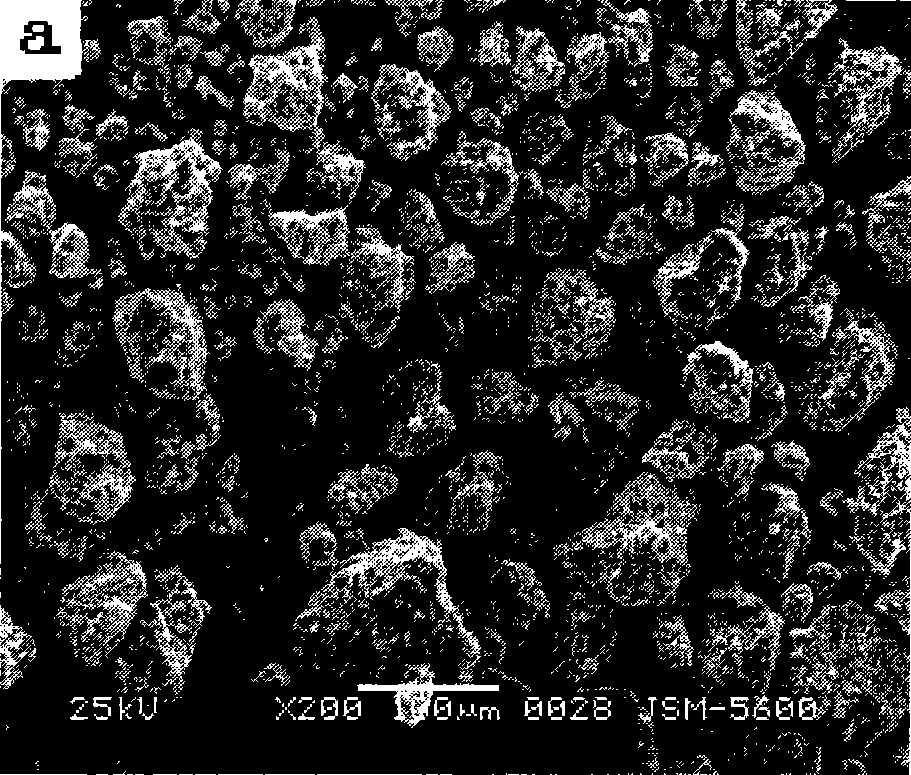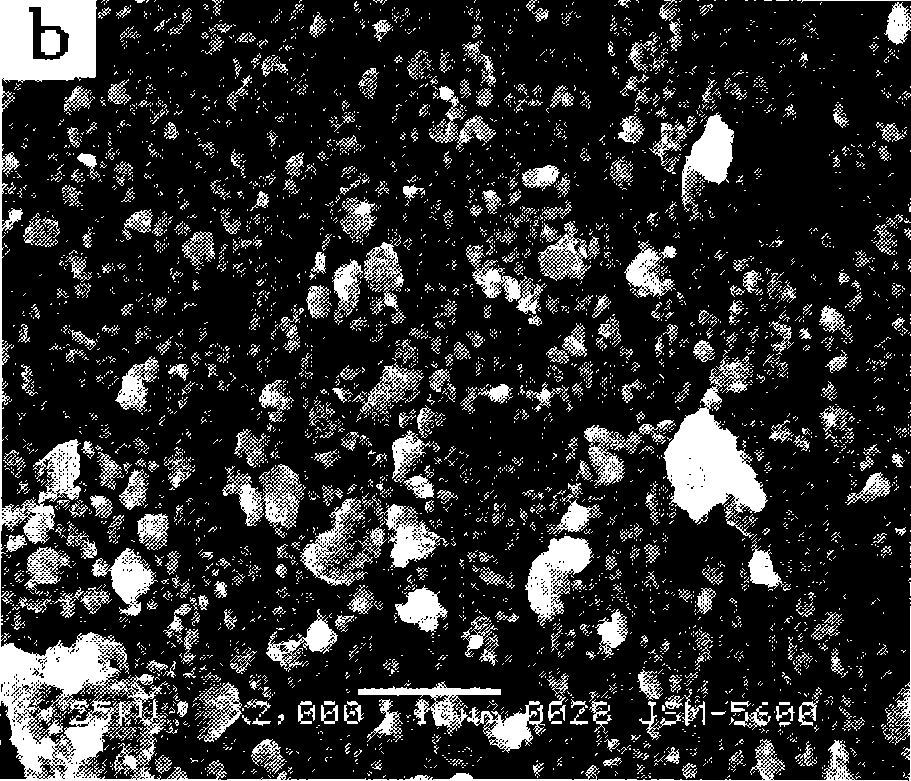Gamma-group Ti-Al alloy material with high-temperature resistance oxidation and manufacture method thereof
A high-temperature oxidation resistance, titanium-aluminum alloy technology, applied in the field of γ-based titanium-aluminum alloy materials and their preparation
- Summary
- Abstract
- Description
- Claims
- Application Information
AI Technical Summary
Problems solved by technology
Method used
Image
Examples
example 1
[0050] Example 1: The mechanical alloying method is adopted, that is, the mixed powder including nano-scale grains, amorphous state and part of TiAl intermetallic compounds is first obtained by high-energy ball milling. TiH 2 , Al, Si and Nb powders are subjected to high-energy mechanical ball milling. Under the condition of great plastic deformation, cold welding and crushing occur continuously. With the extension of ball milling time, the powder particle size gradually becomes smaller and the particle size is more uniform. see Figure 1a It can be seen that after ball milling for 5 hours, most of the powder particles still maintain the original powder form, and the average particle size is 40 μm to 50 μm. With the extension of the ball milling time, when the ball milling is up to 30h (see Figure 1b ), the particle size of the powder was significantly refined, most of the powder particle size was uniform, but some powders were agglomerated. During the 35h ball milling, du...
example 2
[0051] Example 2: see Figure 2a It can be seen that the powder particles of the ball milled for 35h become thinner and smaller during the continuous welding and crushing process, and a lamellar structure is formed after ball milling (refer to the arrow in the figure). During ball milling, powder particles of the same composition and powder particles of different compositions are welded under the action of strong extrusion, impact, etc., thus forming a "sandwich" structure of lamellae. The diffraction spot analysis result is the diffraction pattern of Ti2Al phase, Ti2Al is a metastable phase, indicating that a metastable phase is formed during the ball milling process, and a variety of metastable phases can be formed between Ti and Al, but no other metastable phases were found in this experiment. phase appears. Figure 2b It is the powder morphology image and diffraction spot photo of ball milling for 40h. It can be seen from the figure that the powder particles are very smal...
example 3
[0052] Example 3: Referring to Figure 3(a), it can be seen that after 5 hours of ball milling, most of the powder particles still maintain the original powder form, and the average particle size is 40-50 μm. When the ball milling time increases to 40 hours (see Figure 3 (b)), The powder particles are obviously fined. The effect of powder ball milling is very obvious. The average size of the observed powder particle clusters is 0.8 μm.
[0053] Refer to 3(c): After 35 hours of high-energy ball milling, there are many fine grains of about 10 nm on the powder particle film. The diffraction spots are analyzed as TiAl and Ti3Al discontinuous polycrystalline thin film rings, and the appearance of TiAl and Ti3Al discontinuous polycrystalline rings. It shows that the powder particles are very small at this time, and nanocrystals are formed.
PUM
| Property | Measurement | Unit |
|---|---|---|
| size | aaaaa | aaaaa |
| size | aaaaa | aaaaa |
Abstract
Description
Claims
Application Information
 Login to View More
Login to View More - R&D
- Intellectual Property
- Life Sciences
- Materials
- Tech Scout
- Unparalleled Data Quality
- Higher Quality Content
- 60% Fewer Hallucinations
Browse by: Latest US Patents, China's latest patents, Technical Efficacy Thesaurus, Application Domain, Technology Topic, Popular Technical Reports.
© 2025 PatSnap. All rights reserved.Legal|Privacy policy|Modern Slavery Act Transparency Statement|Sitemap|About US| Contact US: help@patsnap.com



